The No-Nonsense Full-Body Strength Workout Plan
Get stronger faster with these classic full-body strength workouts that focus on big bang-for-your-buck moves

This full-body strength workout plan keeps things simple by focusing on three big compound exercises: the back squat, the overhead press and the deadlift. Each of the three full-body workouts is built around doing five sets of five reps of one of those barbell exercises, with other moves involved as accessory exercises to help improve your performance at the main lift.
Doing five-rep sets simultaneously allows you to lift heavy (rest periods are longer to help you recover) while also completing a high number of total reps, which means these workouts will have a huge impact on your full-body strength. Do each workout once a week for six weeks, aiming to slightly increase the load on each lift every time you train.
Workout 1: Squat
1 Kettlebell goblet squat
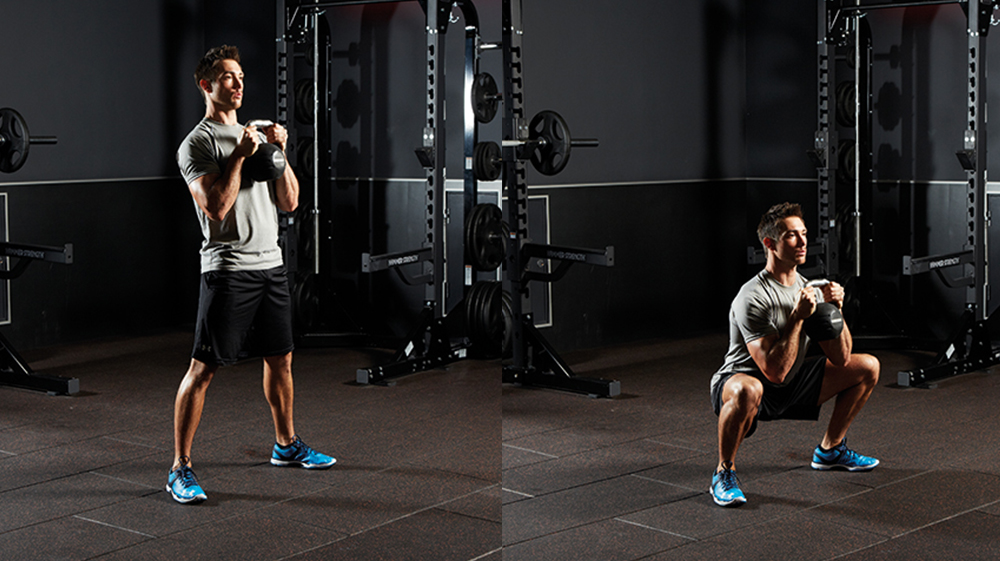
Sets 3 Reps 12 Rest 60sec
Why This will get you moving in the right way to gear up for your main lift of the session, the barbell squat. It’s a fairly light way to ease into the session, which will allow you to focus on depth. Having the weight in front of you also encourages you to keep an upright torso.
How Hold a kettlebell by the horns in front of your chest. Simultaneously hinge at the knees and hips to lower as far as you can, keeping your weight on your heels and mid-foot. Return to the start and repeat.
2 Jump squat
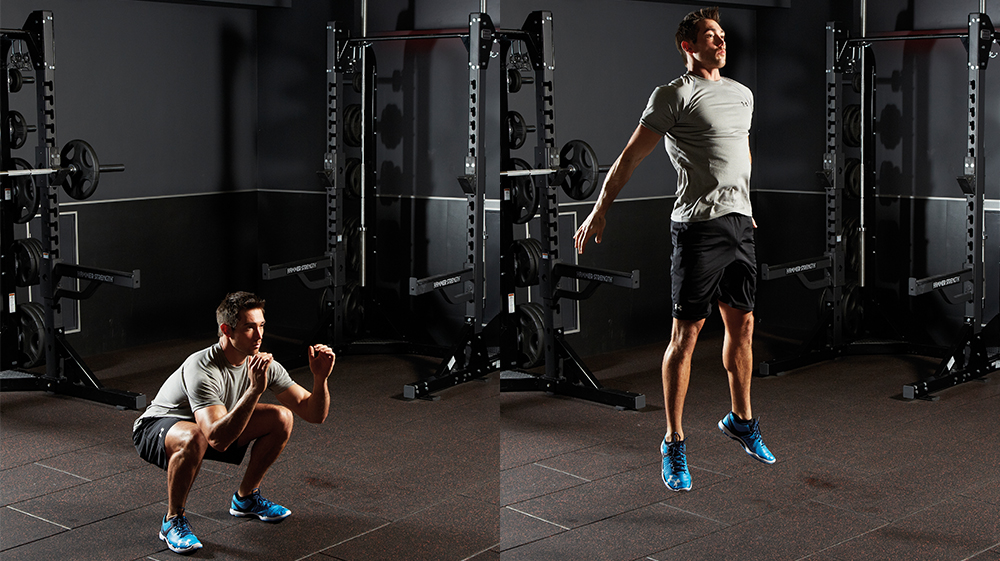
Sets 3 Reps 5 Rest 60sec
Why This explosive move will activate your fast-twitch muscle fibres, priming your nervous system so you get maximum muscle fibre recruitment when you perform the heavy sets in the next exercise. The rep count is low because this is about quality of movement rather than exhausting your target muscles.
Sign up for workout ideas, training advice, reviews of the latest gear and more.
How With feet shoulder-width apart, squat down, then explode up to jump as high as you can. Land softly and go straight into the next rep.
3 Back squat

Sets 5 Reps 5 Rest 2min
Why This is the main move of the workout, so it demands maximum focus. The squat is one of the most effective strength-building exercises you can do. You get more rest than usual to allow your body more recovery so you can lift the maximum weight possible.
How With the bar on your back and your feet shoulder-width apart, simultaneously bend at the hips and knees to lower into a squat. Lower as far as you can, keeping your weight on your heels and mid-foot and your chest up. Push your elbows forwards to engage your lats and prevent your spine from bending.
4 Plank

Sets 3 Time 60sec Rest 60sec
Why A heavy squat requires a strong core to keep your torso upright. This move will build strength and stability across the whole of your abs, lower back and deep-lying core muscles.
How Get into position with your body in a straight line from head to heels and your elbows directly below your shoulders. If your hips are too high that will take tension off the core muscles. If they are too low it will put strain on your lower back.
Workout 2: Overhead Press
1 Kettlebell press
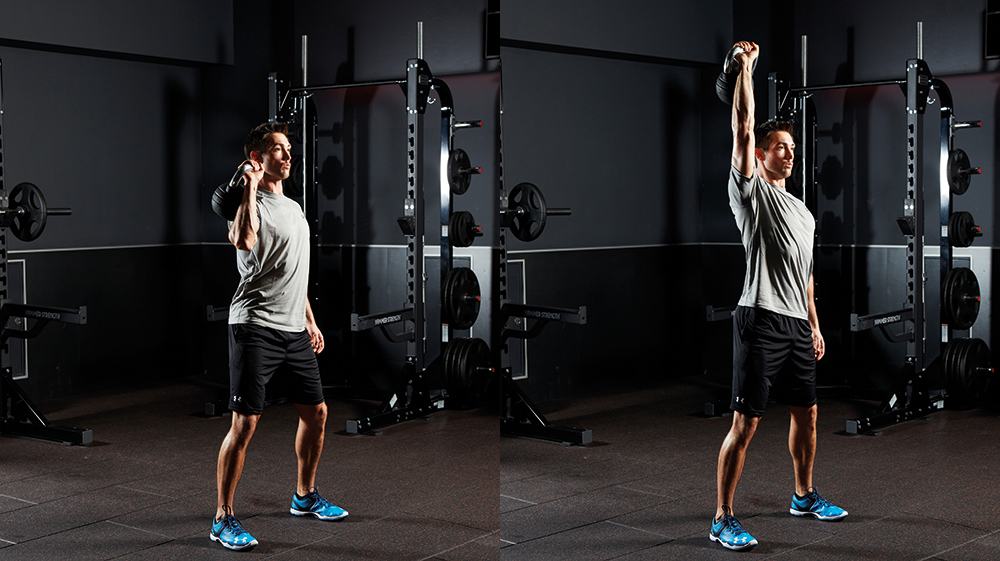
Sets 3 Reps 6 each side Rest 45sec
Why This move will warm up your shoulder joints, which are complex and can get injured easily. The single-sided nature of the move means that your stabilising muscles are activated to control your movement.
How With your elbow below your wrist and the kettlebell resting on the back of your wrist, press the weight directly overhead. Lower back to the start under control. Swap sides after five reps.
2 Overhead press
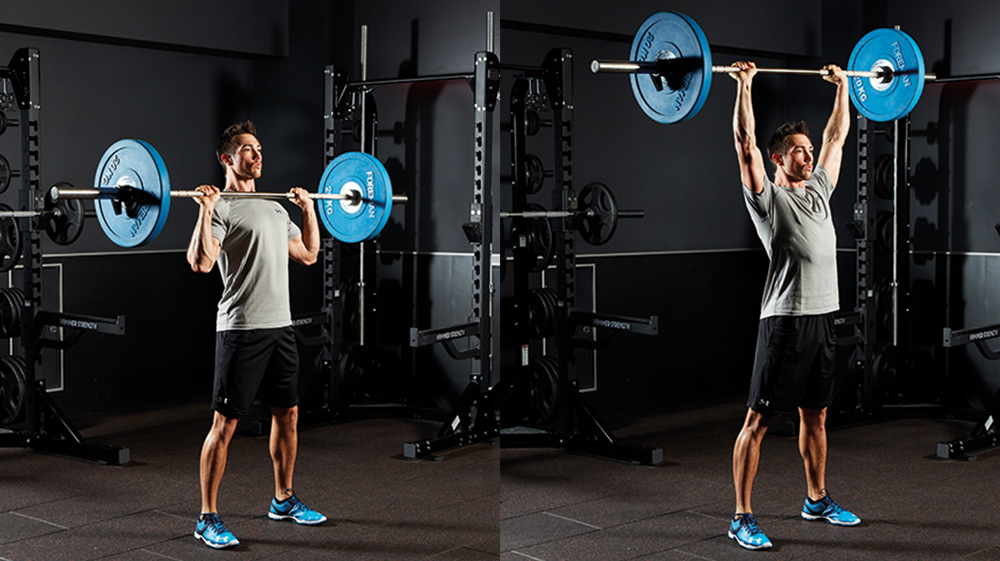
Sets 5 Reps 5 Rest 2min
Why Being able to press a heavy weight overhead is a good sign that you have structural integrity in your shoulders and upper spine, as well as good core strength.
How Start with the bar on the front of your shoulders, gripping it with hands just wider than shoulder-width apart. Squeeze your glutes to give yourself a stable base and activate your core, then press the weight overhead. Lower under control. Only lower the bar to just below chin height to avoid internally rotating and overstressing your shoulders.
3 Push press
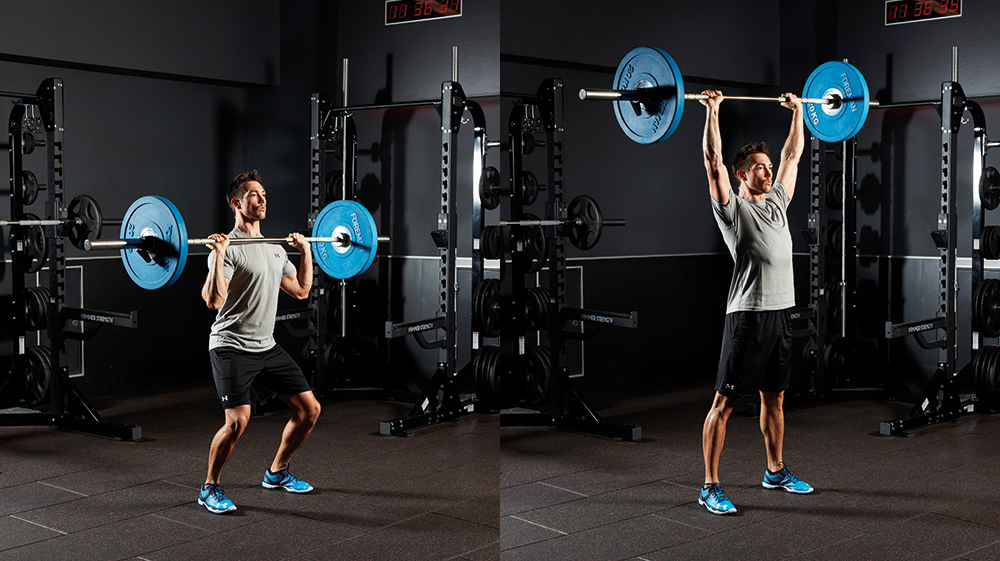
Sets 3 Reps 10 Rest 60sec
Why This exercise is a good way of fully fatiguing your shoulders after they’re no longer able to complete strict overhead press reps.
How Start with the bar on the front of your shoulders, gripping it with hands just wider than shoulder-width apart. Bend at the knees slightly, then straighten up and use the momentum to assist pressing the bar overhead. Lower under control.
4 Barbell roll-out

Sets 3 Reps 6-8 Rest 60sec
Why A good overhead press requires you to be strong in the core, particularly when your arms are above your head. This dynamic movement mimics that position to give you a direct abdominal strength benefit.
How Start on your knees with your shoulders above the bar and your arms straight. Contract your abs, then roll the bar out in front of you. Go as far as you can, then roll the bar back to the start.
Workout 3: Deadlift
1 Kettlebell swing
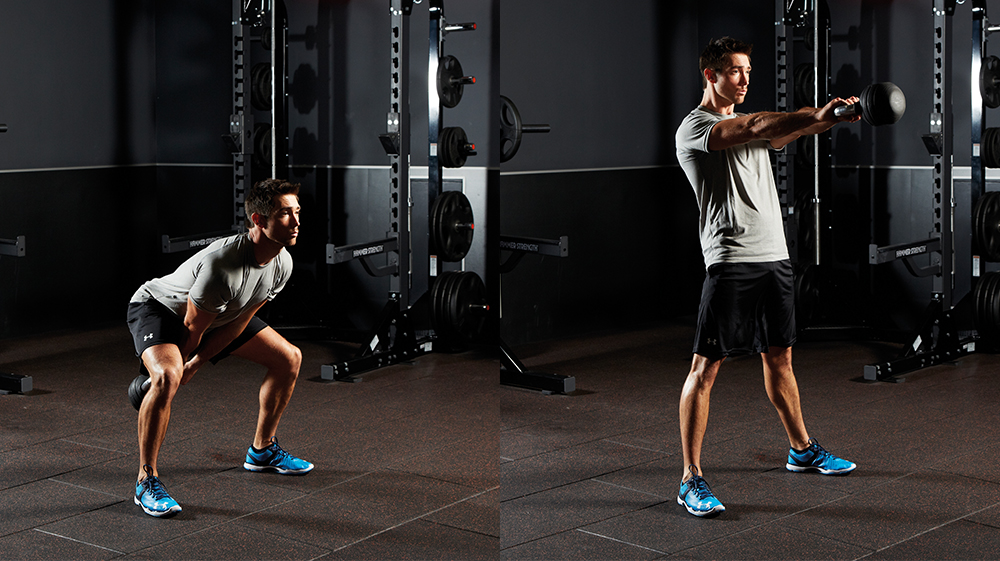
Sets 3 Reps 12 Rest 45sec
Why When done properly, the kettlebell swing is a hip hinge rather than a squatting movement. Drilling that movement pattern will help you engage your hamstrings and maintain good form during a heavy deadlift.
How Holding the bell in two hands, swing it back between your legs and then straighten up with a hip snap. The key to a good swing is hinging at the hips and straightening up powerfully so that the hip drive, rather than your arms, is responsible for moving the weight.
2 Deadlift
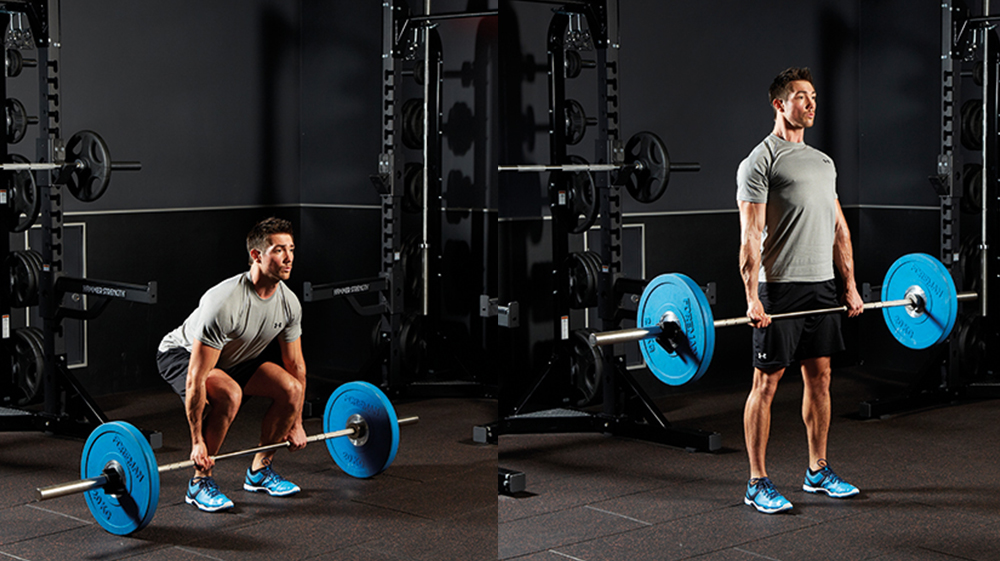
Sets 5 Reps 5 Rest 2min
Why The deadlift is arguably the most effective whole-body strength and muscle builder. It also focuses on your posterior chain – the muscles on the back of your body, which many people leave undertrained but which play a key role in promoting good posture and keeping you injury-free.
How Set up so you’re gripping the bar overhand, hands just wider than shoulder-width apart. Initiate the movement by loading your hamstrings and straightening your legs. Once the bar is past your knees you can straighten up.
3 Romanian deadlift

Sets 3 Reps 10 Rest 60sec
Why After your heavy deadlift sets this is a good way of developing the hamstring strength needed to improve your deadlift. It’s technically a lot easier than the deadlift so you’ll be able to go reasonably heavy even when your muscles are tired.
How Hold a barbell with an overhand grip just outside your thighs. Hinge at the hips to send the bar down the front of your thighs, ensuring that the bar stays close to you throughout the lift. Lower until you feel a strong stretch in your hamstrings, then straighten back up and contract your glutes at the top of the move.
4 Hip thrust

Sets 3 Reps 10 Rest 60sec
Why Strong glutes are vital for a big deadlift and this move targets them directly.
How Rest your upper back on a bench and hold the barbell on your hips. Push your hips towards the ceiling as far as you can while squeezing your glutes together. Lower your hips under control, then repeat.
5 Bent-over row

Sets 3 Reps 10 Rest 60sec
Why You can’t hit a big deadlift if you have a weak back, and this move is great at strengthening your larger back muscles.
How Hold a bar with an overhand grip and bend at the hips to let the bar hang down at knee height. Pull your elbows back to bring the bar up to your bellybutton, then lower back to the start.

Joe Warner is a highly experienced journalist and editor who began working in fitness media in 2008. He has featured on the cover of Men’s Fitness UK twice and has co-authored Amazon best-sellers including 12-Week Body Plan. He was the editor of Men’s Fitness UK magazine between 2016 and 2019, when that title shared a website with Coach.
